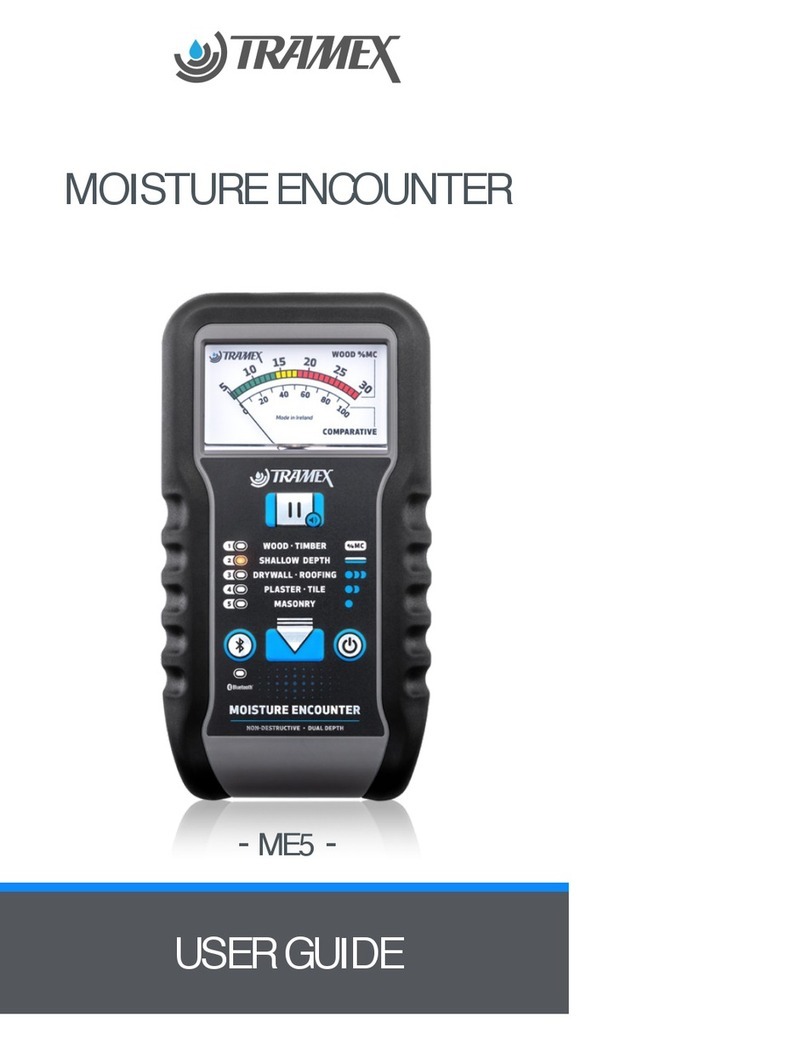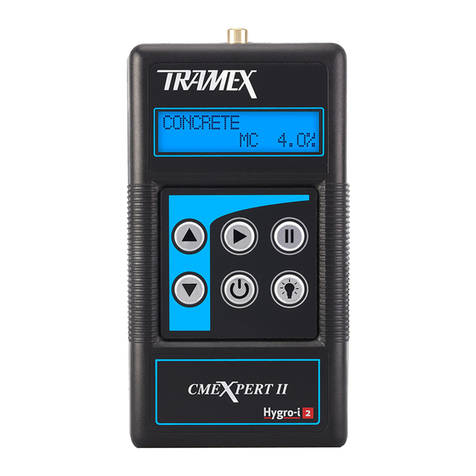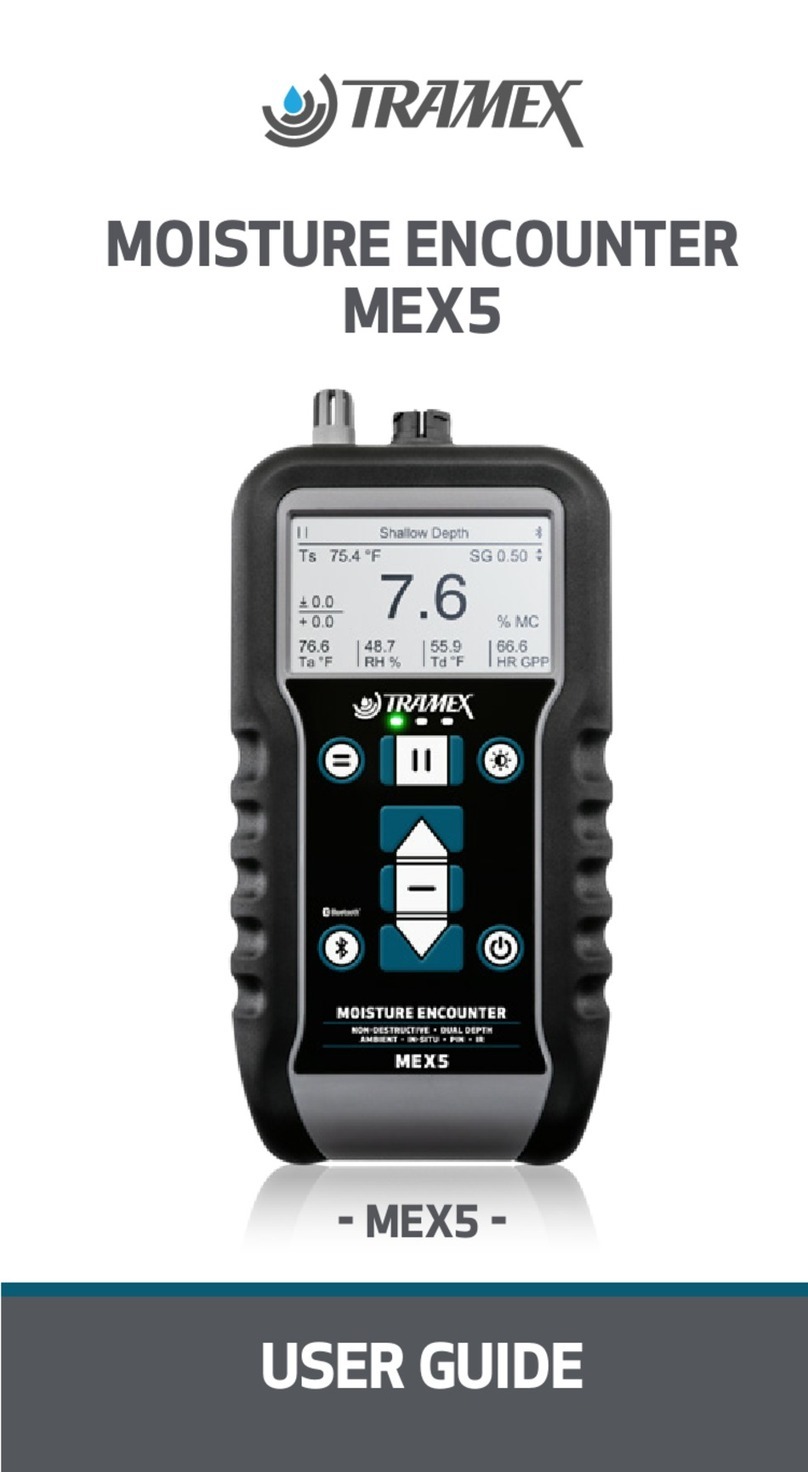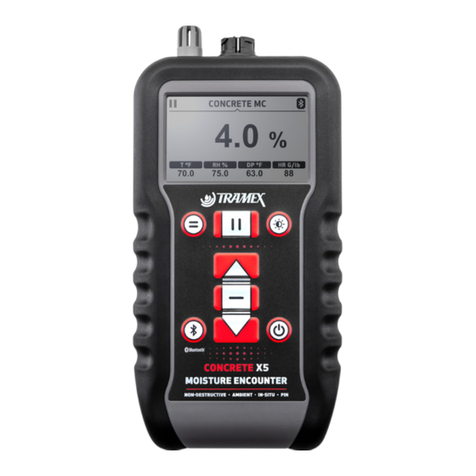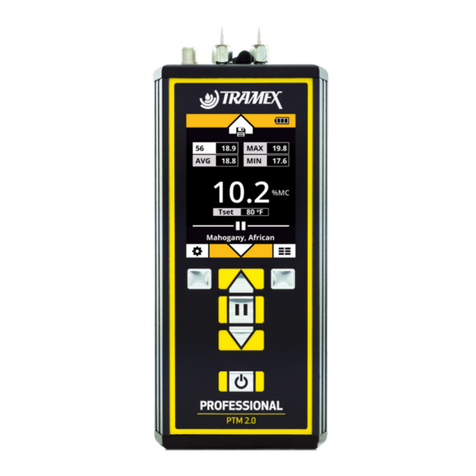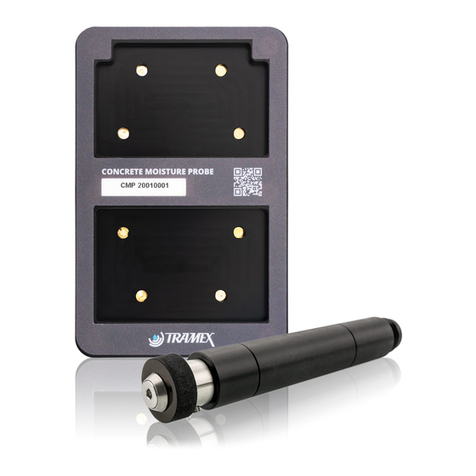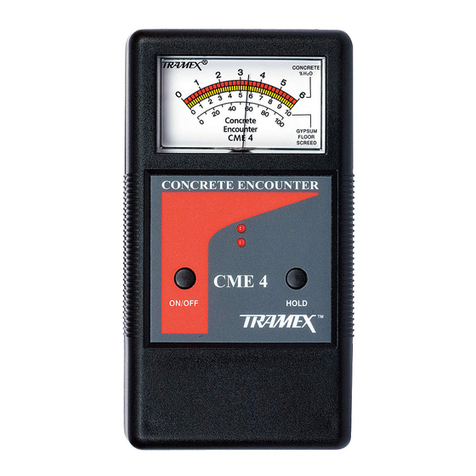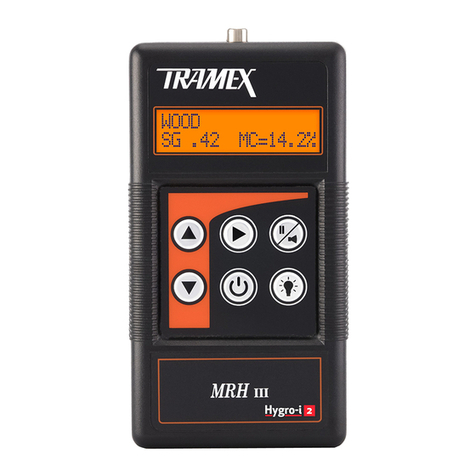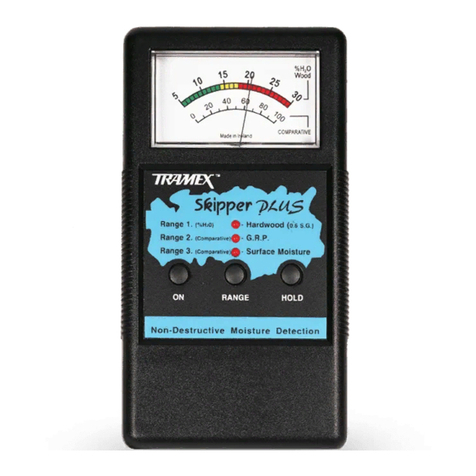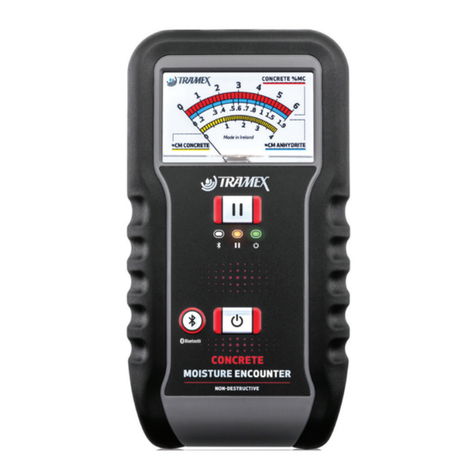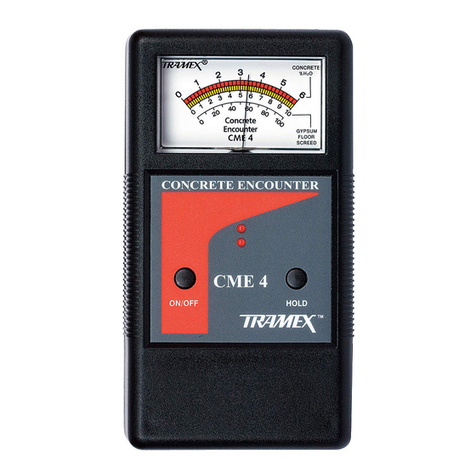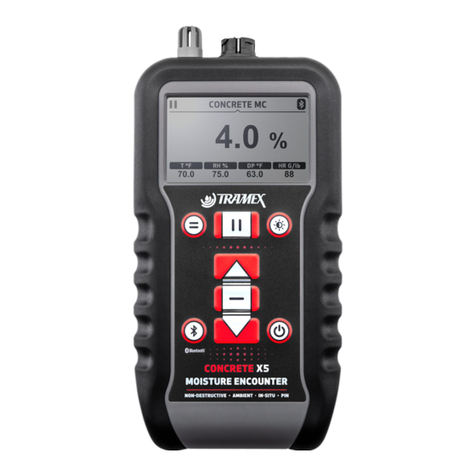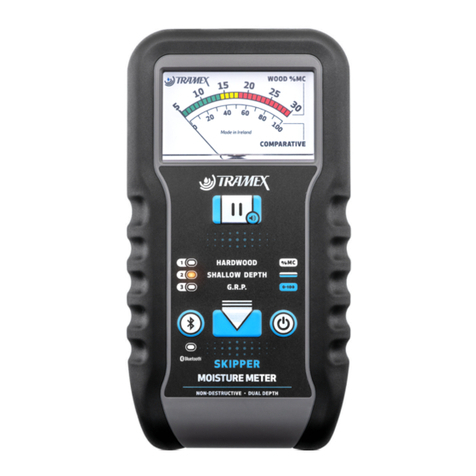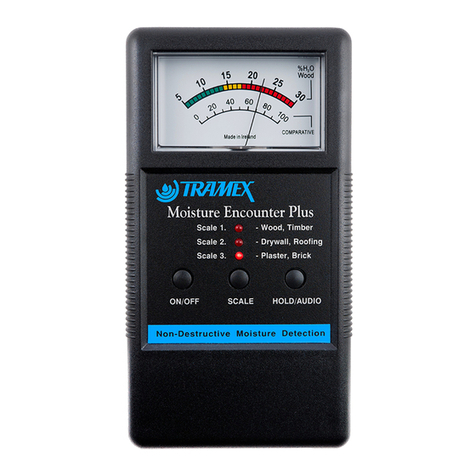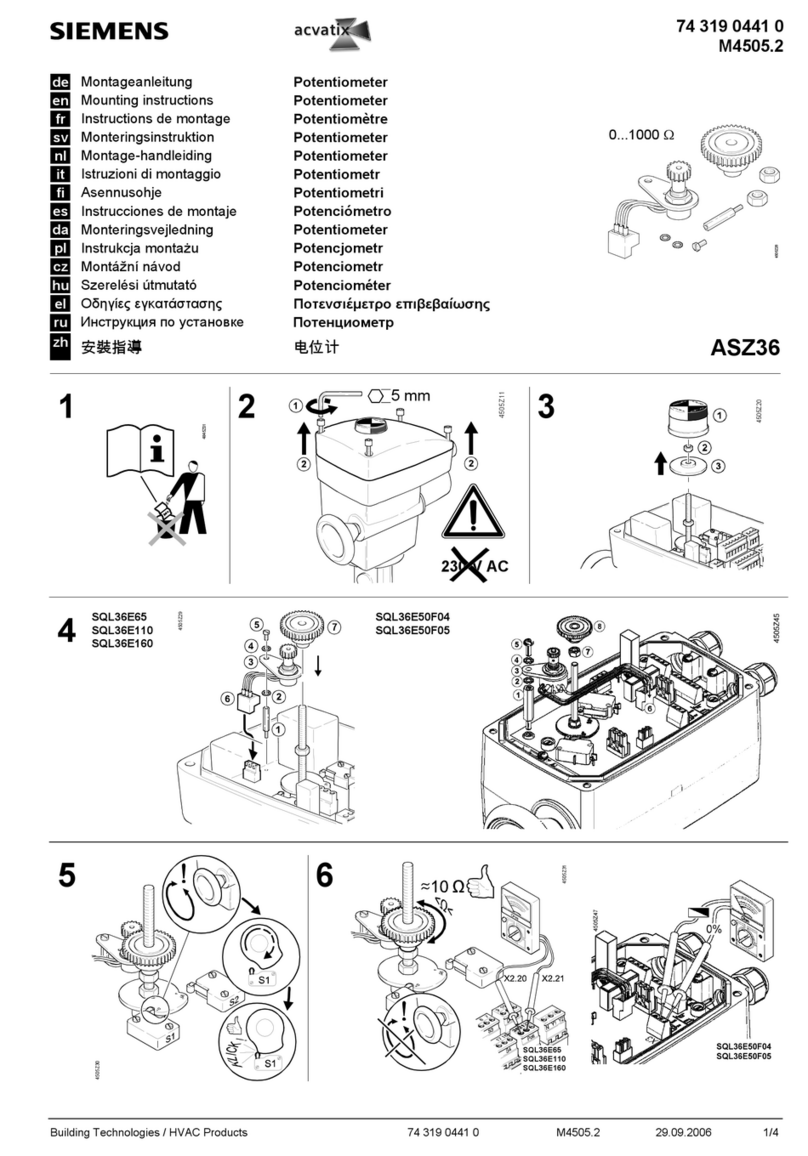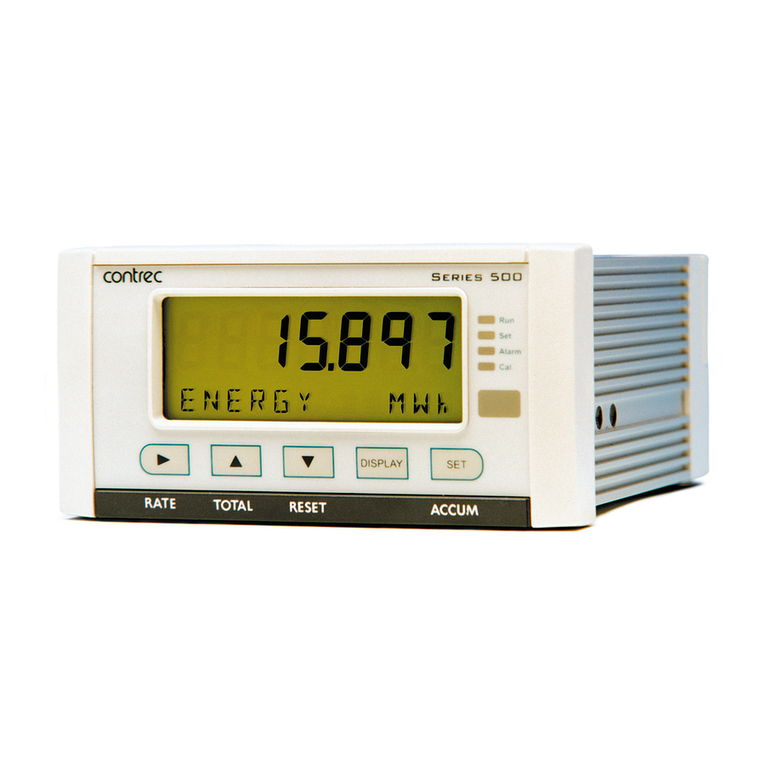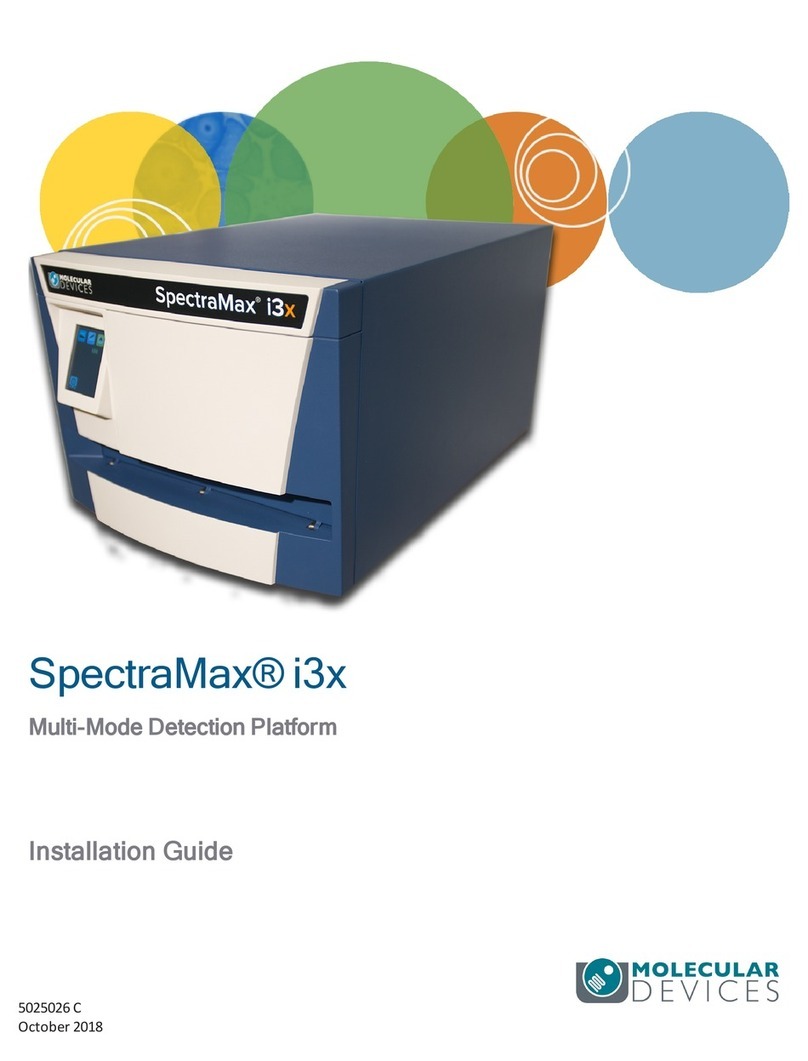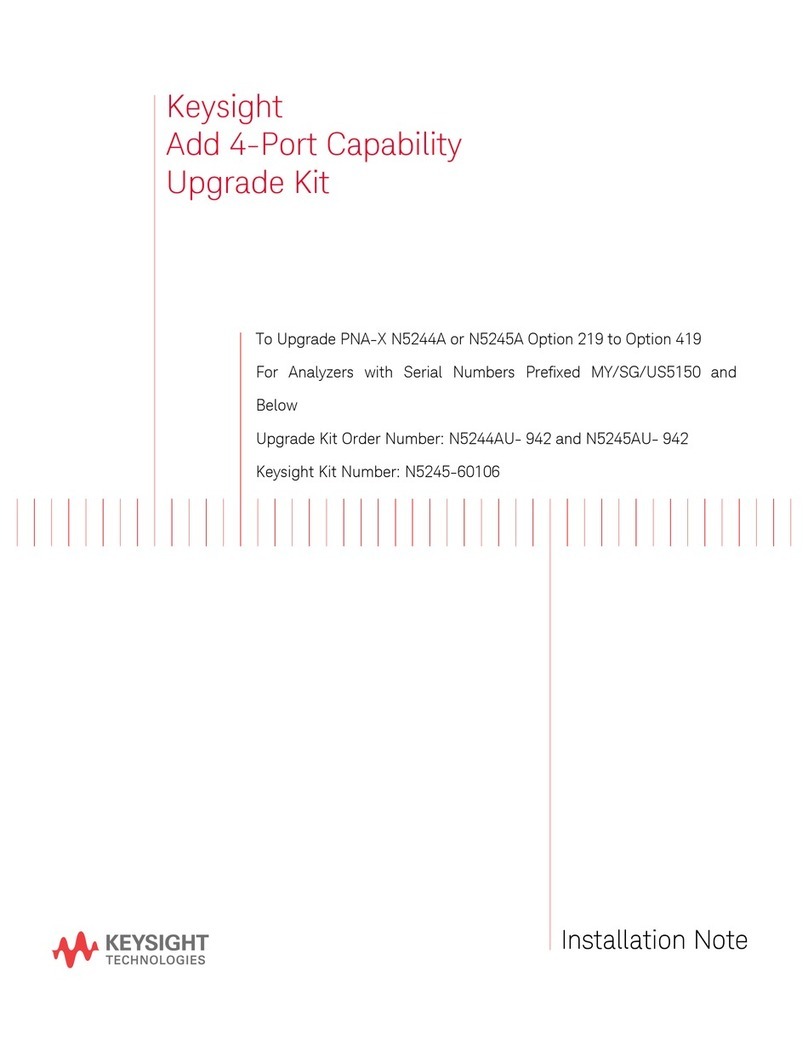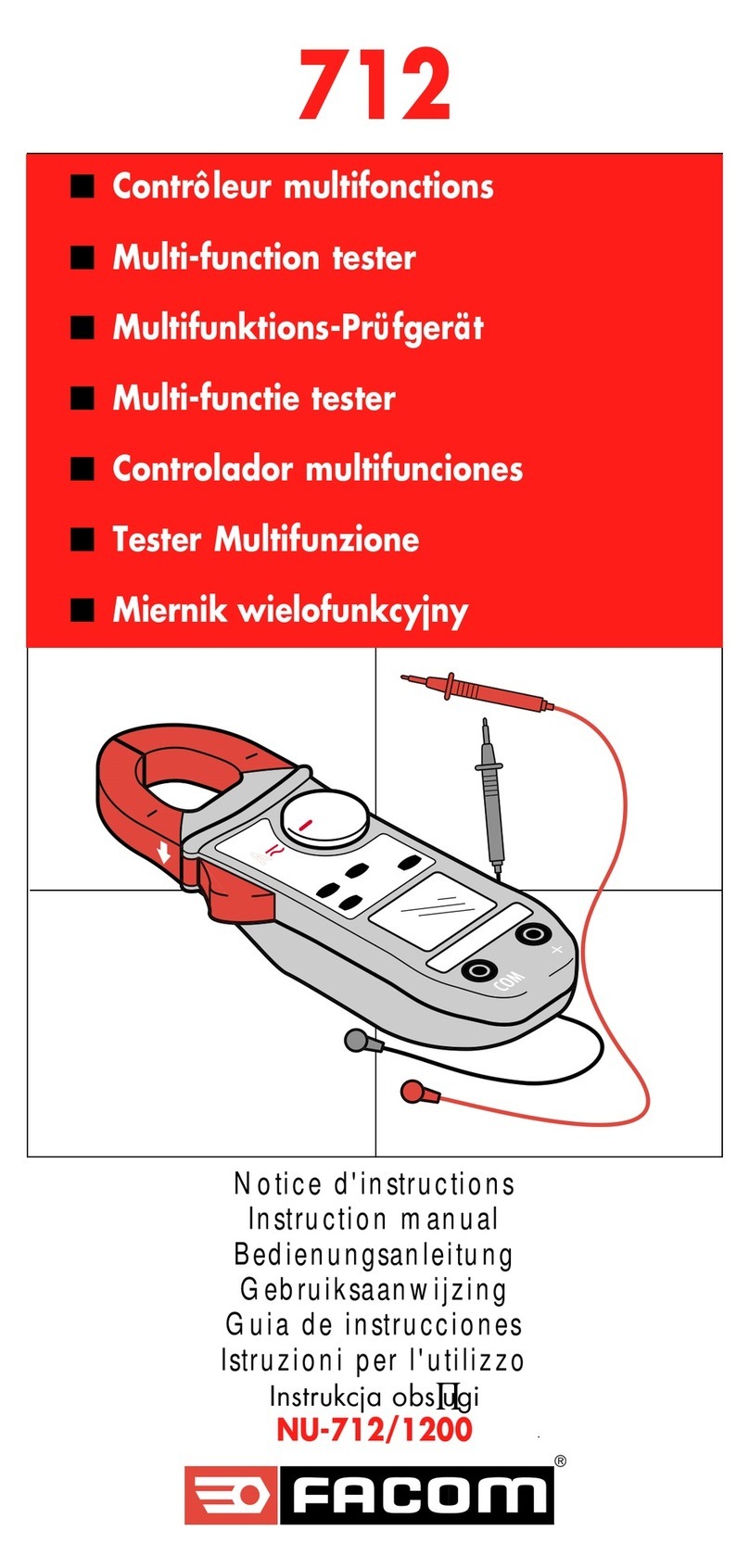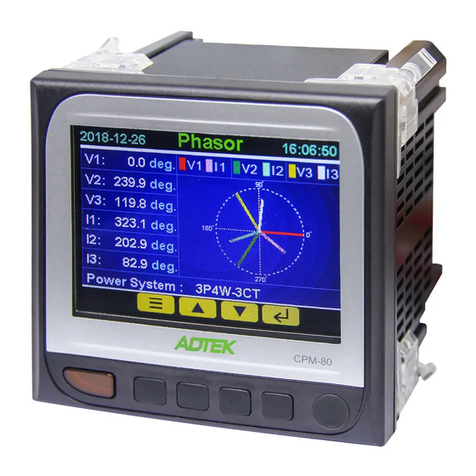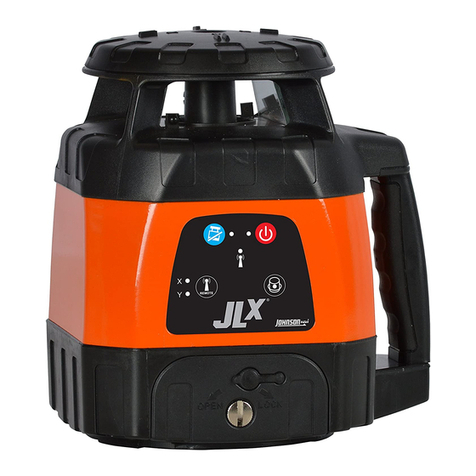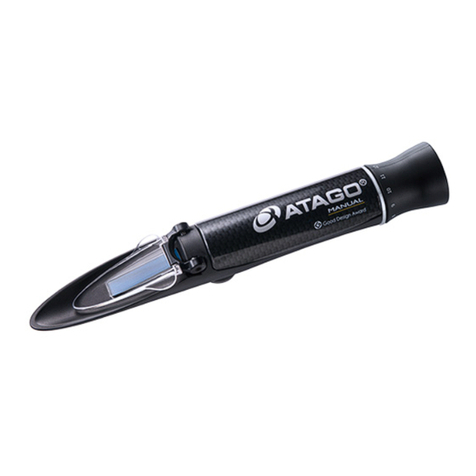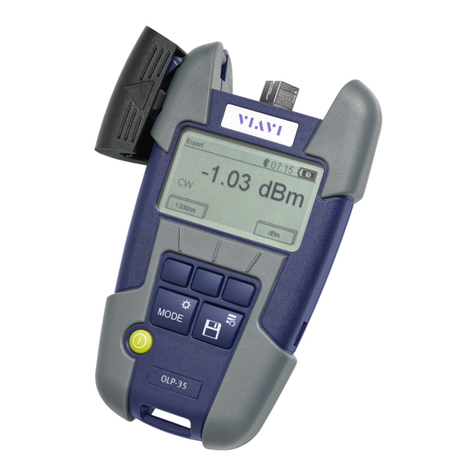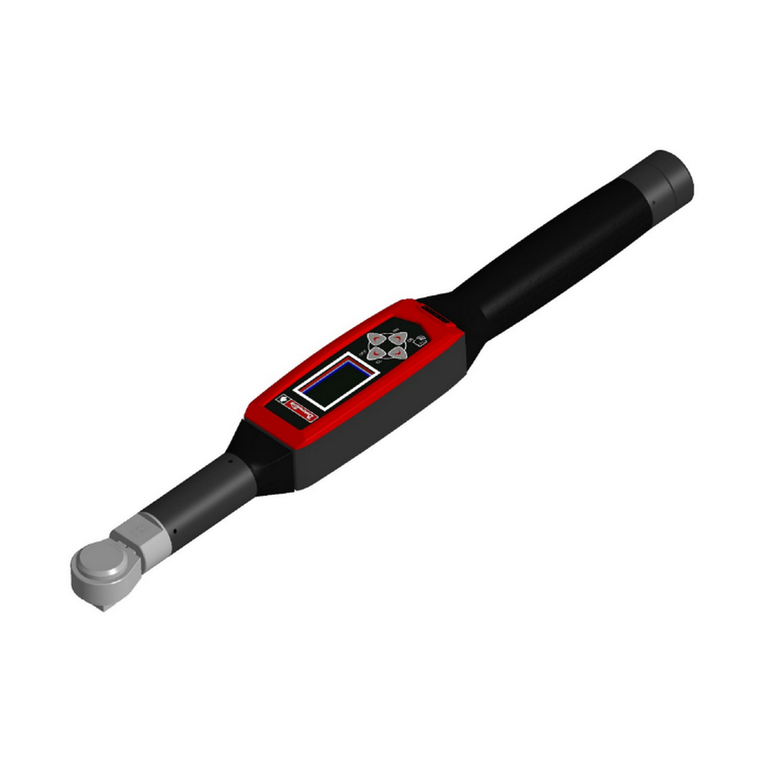Checkline-Europe
-10-
9.0 WORKING WITH YOUR MRH
Comparative Material Scales
The MRH has 4 comparative material scales: Roof, Masonry, Drywall and Laminate.
The comparative material scales are selected using the key and switching
between the various scales using or key.
9.1 Roof Scale
Roof Testing
a) The presence of moisture in built-up roofs covered with multi-ply roofing felt,
PVC, modified bitumen and all non-conductive membranes (See Limitations
Section), can cause blistering and splitting of the roof covering. In addition
moisture can cause considerable damage to the contents and fabric of the
building as well as heat loss through wet insulation. Your MRH can be used to
confirm a new roof has been installed dry and help tracé leaks.
b) If the waterproofing membrane develops a leak, the water can travel within the
built-up-roof structure and enter the building some distance away. Testing the
membrane surface and comparing the dry areas with areas where moisture is
present below the surface can assist in tracing such a leak to its source.
c) As there are many different types and thickness sizes of roofing membranes, it
is not possible to give a calibrated percentage measurement. Instead, a
comparative scale is displayed both numerically, (0 to 99) and in a bar form on
the bottom line of the display. The display also shows low (Lo), medium (Md)
and high (Hi) readings for the scale.
These do not necessarily indicate low, medium or high levels of moisture
but indicate the area of the 0-100 comparative scale where the reading lies.
d) If gravel surfacing is present, this should be removed to ensure your MRH
comes into direct contact with the surface of the membrane.
e) It is recommended that a core be cut to determine the depth and density of the
moisture before carrying out roof repairs. Alternatively, the area can be checked
with a resistance-type moisture meter with insulated pins up to a length of
7”(180mm).
Checkline-Europe
-23-
Meter reading (% moisture) 7 8 9 10 11 12 13 14 15 16 17 18 19 20 21 22 23 24
Species Correct moisture content
Gum, American, red 10 11 12 12 13 14 15 16 17 18 18 19 20 21 22 23 24 24
Gum, red, river 10 11 12 13 14 15 16 17 18 19 20 21 22 23 24 25 26 27
Gum, rose 9 10 11 12 13 14 14 15 16 17 18 18 19 20 21 22 23 24
Gum, shining 8 9 10 11 11 12 13 14 15 16 17 18 19 20 20 21 22 23
Gum, yellow 9 10 11 12 12 13 14 15 15 16 17 18 18 19 20 21 21 22
Hemlock, western 8 9 10 11 12 13 15 16 17 18 19 20 21 22 23 24 26 27
Hickory - 7 9 11 13 14 16 17 18 20 21 22 24 - - - - -
Iroko 7 7 8 9 10 11 12 13 14 15 15 16 17 18 19 19 20 21
Ironbark, red 11 12 12 13 14 15 16 16 17 18 19 20 21 22 22 23 24 24
Ironbark, red, broad-leaved 11 12 12 13 14 15 16 16 17 18 19 20 21 22 22 23 24 25
Ironbark, red, narrow-leaved 8 9 10 11 12 13 14 14 15 16 17 18 19 20 21 22 23 24
Jarrah 8 9 10 11 12 13 14 15 16 17 18 19 20 21 22 23 24 25
Jelutong 8 9 10 11 12 12 13 14 15 16 16 17 18 19 20 21 21 22
Kamarere (PGN source) 8 9 10 10 11 12 13 14 15 16 17 18 19 19 20 21 22 23
Kamarere (Fiji source) 7 8 8 9 10 11 11 12 13 13 14 15 15 16 17 17 18 19
Kapur 7 8 9 10 11 12 13 14 15 16 17 18 19 20 21 22 23 24
Karri 7 8 9 10 11 12 13 13 14 15 16 17 18 18 19 20 21 22
Kauri, Qld 10 11 12 13 14 15 16 16 17 18 19 20 21 22 23 24 24 25
Kauri, NZ 9 10 10 11 12 12 13 13 14 14 15 16 16 17 17 18 18 19
Kauri, Vanikoro 11 12 13 13 14 14 15 15 15 16 16 17 17 18 18 18 19 19
Kempas 10 11 11 12 13 14 14 15 16 16 17 18 19 19 20 21 21 22
Laran 8 8 9 10 11 11 12 13 14 14 15 16 17 17 18 18 19 19
Larch, European 8 9 10 11 12 13 14 15 16 17 18 19 20 21 22 23 24 25
Lodgepole Pine 7 8 9 10 12 13 14 15 16 17 18 19 20 21 22 23 24 25
Lumbayau 8 9 10 11 12 12 13 14 15 15 16 17 18 19 19 20 21 22
Mahogany, African 10 11 12 13 14 15 16 17 18 19 20 21 22 23 24 25 26 27
Mahogany, American 7 8 9 10 11 12 13 14 15 16 17 18 19 20 21 22 23 24
Mahogany, Brazilian - - - 10 10 11 12 13 14 15 15 16 17 18 19 20 21 22
Mahogany, brush 8 9 10 10 11 11 12 12 13 14 14 15 15 16 16 17 18 18

















